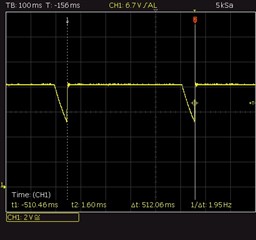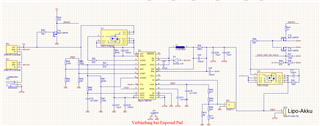Hello E2E Team,
we have a problem with the design of our battery charger. We designed it like it is described in figure 23 (chapter 10.3) of the datasheet.
Input Source: 12V
2 Cells
Now we are facing the problem, that the switching node voltage (Pin 1, 24) has a voltage dip every 500 ms:

Can you explain this behaviour? Do you have any suggestion here?
Many thanks and best regards,
Thomas


